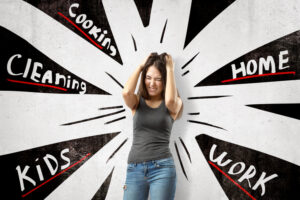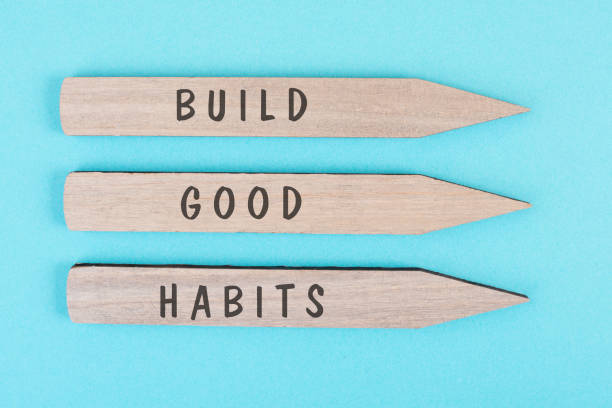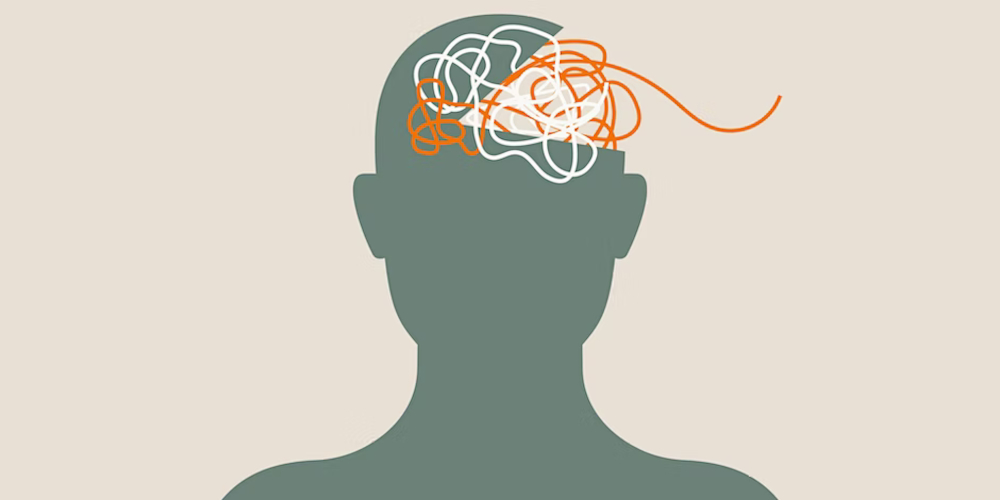Category: Uncategorized
Living Longer with ADHD: A Women’s Guide to Health, Focus & Longevity
Recently, a study on ADHD and life expectancy caught my attention, and it’s one that really made me stop and think. Researchers Elizabeth Nions and her colleagues at Cambridge University examined how symptoms of ADHD impact the life expectancy of adults in the United Kingdom. The results were alarming: women with ADHD had a life expectancy reduced by over 8.64 years, while men experienced a reduction of 6.78 years. These findings raise a lot of important questions about the long-term effects of ADHD, especially about how ADHD manifests differently in men and women and how those differences influence health outcomes.
The researchers attributed these reductions in life expectancy to a combination of factors, including ADHD-related risk factors and unmet needs for treatment and support. But what exactly are these factors, and why does ADHD appear to have a more significant impact on the lives of women compared to men? More importantly, what can women with ADHD do to improve their health and longevity, despite these challenges?
In honor of Women’s History Month, I’m going to guide you through understanding how ADHD can impact women’s health, the factors that contribute to a shorter life expectancy, and—most importantly—how you can create a Personal Wellness Plan to address these concerns. This plan will help reduce physical, emotional, and psychological stress while offering you practical strategies to manage your symptoms and live a healthier, more fulfilling life.
Cultural Expectations
In the decades following the second wave of feminism, outdated gender roles and societal norms still expect for women to bear most of the weight for their households. Although it’s been 30 years since the publication of “The Second Shift” by Arlie Hotschild, the experience of women in dual-career households remains largely unchanged. In single parent households, a lack of partnership means that full responsibility for childcare and income can prevent women from educational, work and social opportunities. For women of color, equal access to care and racism further complicate their lives. These issues contribute to barriers with diagnosis and treatment related to ADHD (resource allocation, scheduling, healthcare/insurance, etc.).
The stress and difficulties associated with the many roles that women with ADHD are expected to play can be overwhelming and, according to the study results above, even life-threatening. These difficulties can lead to poor lifestyle habits, such as neglecting exercise, poor eating habits, and inadequate sleep. With executive functioning challenges related to planning and prioritizing, women with ADHD may face more significant barriers to accessing proper treatment and support, further exacerbating their health risks.
executive functioning challenges related to planning and prioritizing, women with ADHD may face more significant barriers to accessing proper treatment and support, further exacerbating their health risks.
The Gender Gap: Why Does ADHD Affect Women More Severely?
First, it’s crucial to understand why women with ADHD are at greater risk of reduced life expectancy than men. Historically, ADHD was considered to be a disorder that primarily affected boys, and women’s ADHD symptoms were often overlooked or misdiagnosed. Women may not exhibit the hyperactive symptoms that are typically associated with ADHD in men. Instead, they may experience more internalized symptoms, such as inattentiveness, forgetfulness, and difficulty focusing—symptoms that are sometimes dismissed as “just being disorganized” or “not trying hard enough.”
As a result, many women with ADHD go undiagnosed until later in life, by which time they’ve already experienced the negative consequences of untreated ADHD, such as chronic stress, anxiety, depression, and relationship issues. In fact, research has shown that women with ADHD are more likely to experience co-occurring mental health conditions like depression and anxiety, which can further affect their overall health and well-being.
research has shown that women with ADHD are more likely to experience co-occurring mental health conditions like depression and anxiety, which can further affect their overall health and well-being.
Your Five Step Personal Wellness Plan
Now that we’ve explored why women with ADHD may experience a reduction in life expectancy, let’s shift focus to how you can take charge of your health and well-being. A Personal Wellness Plan is a customized approach to improving your physical, emotional, and psychological health. By incorporating a variety of strategies, you can minimize the impact of ADHD on your life and increase your chances of living a longer, healthier life.
Here are some essential components of a Personal Wellness Plan that can help you live longer and healthier with ADHD:

- Get informed about ADHD and co-occurring conditions: Knowledge about ADHD and its common co-occurring conditions (what I often call “friends”) is empowering. Research about ADHD and neurodivergence gives you facts and statistics that you can use to your advantage – and these are not found on TikTok. Reliable information found on websites such as CHADD, ADDA, ADDitudemag, Psychology Today, NIMH/CDC etc., and from ADHD expert coaches and therapists also reduces feelings of isolation (“this only happens to me”) and validates your experiences. Plus, verified research informs you about what works and what doesn’t work – with the goal in mind of a higher quality of life, more vitality, and efficiency.
- Zoom out and assess your situation: Look around at your environment and also at yourself – ask: “What’s happening inside of me, or external to me, that could be contributing to some of the challenges that I’m having?”. Be honest about whether you are experiencing symptoms of anxiety, depression, PTSD, etc. Maybe you notice your moods are cycling. Maybe you have a history of trauma and you’re having recurring nightmares. Maybe you’re having panic attacks before team meetings at work. How are you managing these symptoms? Are you using food, cigarettes, alcohol, marijuana, or the internet to self-medicate or avoid uncomfortable feelings? Improving your understanding of what’s actually going on will affect your choices for interventions, and help build coping skills that are more easily learned and applied to your everyday life.
- Ask for help and find support: People do not have to struggle alone. It’s important to ask for help. Often we need an outsider to look at our situation and offer suggestions, interventions and ideas. I think that people often wait too long to get assistance, thinking that “If I just slog through this, the rest will get easier”. Effective support is both collaborative and compassionate–you work with a provider or coach towards goals that you mutually set. These goals need to address chronic stress, financial issues, unhealthy coping behaviors and personal relationships. Together you build up your resources (medical, psychological, cognitive, community, religious) and your coping mechanisms by learning new skills or leaning into existing ones.
- Create simple self-care routines: Self-care entails more than a bubble bath. Self-care habits reduce overwhelm and stress and are most effective when part of a routine. Your goal here is to decrease the ‘too-muchness’ of your life, moment by moment. Start by brainstorming activities that you enjoy and that increase your calm. Then, schedule a time in the day when you can do one of them – keep it simple by aiming for just one thing to increase the probability of success over time. Listening to a favorite playlist, doing five minutes of stretching, taking a brisk walk around the block, five minutes with a pet – things that are small, simple, and rewarding. By creating and sticking to these small routines, you’ll be better able to tackle bigger things like eating, sleeping, personal hygiene, cleaning, laundry, and even spending time with friends. All of these will reduce the sense of “drowning” and keep stress at bay.
- Whole Person Approach: Accept your brain by taking a whole-person perspective. Create space from who you are while acknowledging your neurodivergence. You are not your diagnosis. A diagnosis is something that is part of a narrative, not the whole story. In education, teachers are trained to use “person first” language – not “Autistic child” or “ADHD girl”but rather”a child with Autism” or “a girl with ADHD”. This is a small but mighty distinction that is also relevant to a whole person approach for adults. This shift in language and perspective acknowledges that having ADHD reflects something in you, but it is not you. The sum of your being is so much more than that. Yes, having ADHD affects your executive functioning skills in terms of organization, prioritizing, emotional regulation, and working memory but it doesn’t lessen your value as a person. Those internal judgments from your inner critic can be debilitating emotionally, psychologically, and harmful to your well-being.
Living Well with ADHD
Living with ADHD can present unique challenges, but with the right tools and strategies, you can lead a fulfilling, healthy life. By prioritizing your establishing simple routines, becoming educated about ADHD and its “friends”, reframing your approach, and finding supportive communities, you can enhance your focus, reduce stress, and improve your longevity.
Remember, you are not alone on this journey. Support is available, and there are effective treatments that can help. By implementing a Personal Wellness Plan tailored to your needs, you can take control of your health and improve your chances of living a longer, healthier life.

Surviving the Holiday Chaos with Your Neurodiverse Child: Practical Tips and Tricks
Dear Dr. Sharon:
My daughter has ADHD and I suspect she might be on the Autism spectrum, though she hasn’t been formally evaluated. She is eight years old and struggles with understanding social cues, navigating groups and keeping friends in addition to inattention and distractibility. After a lot of hard work, this is the first year that we finally have solid systems in place to support her at home and at school with consistent routines, clear expectations, a social skills group and behavior therapy. But. with the holidays coming, I am worried that all of the activities and events will undo our hard work! It’s just so much – for her, our younger son and for us, as parents, too. We want our children to experience the joy that comes with this time of year, but not at the cost of her intense meltdowns and disruptions. How do I reduce holiday stress and overwhelm for my neurodivergent child, yet still make this time of year meaningful? – Wendy
Dear Wendy,
The holiday season runs on overstimulation – all the food, all the lights, all the sounds, all the expectations…all the things, all month long. As the parent of a neurodivergent child, it can be tricky to strike a balance between fostering seasonal joy and setting boundaries during the holidays. How can you create experiences that are fun, rewarding and calmer for you AND your neurodiverse family?
REALISTIC EXPECTATIONS
As parents, we have to take into consideration how much our children and teens with ADHD can actually tolerate, process and enjoy. Part of the holiday stress  for neurodiverse kids and families comes from having too many of these activities in a row and not enough ‘down time’ to process them. When your daughter has a meltdown at 6 p.m. because she doesn’t like the mac-and- cheese, it probably has nothing to do with the food and everything to do with unloading steam from holding it together for so long throughout the day. So, here’s the tip: be realistic about how many gatherings and social engagements are truly necessary for a joyful holiday. Less is often more!
for neurodiverse kids and families comes from having too many of these activities in a row and not enough ‘down time’ to process them. When your daughter has a meltdown at 6 p.m. because she doesn’t like the mac-and- cheese, it probably has nothing to do with the food and everything to do with unloading steam from holding it together for so long throughout the day. So, here’s the tip: be realistic about how many gatherings and social engagements are truly necessary for a joyful holiday. Less is often more!
TIS’ THE SEASON TO SCHEDULE
We know that children who are neurodivergent thrive with consistent expectations and a sense of control of some aspects of their day. But, these things aren’t that common in the chaos of the holiday season. Since schedules can change frequently during the holiday season, start by establishing basic routines to your day. Create blocks of times between breakfast, lunch and dinner that include high and low energy activities as well as a quiet period. Set up regular check-in times in the mornings and afternoons to monitor how she is doing. Collaborate on up to three choices for these time blocks if appropriate.
You might also try saying “What’s different today?” on the refrigerator or a dry erase board – this is for the holiday party, or dinner at Grandma’s, or a parade after school. Remind her that the plan for the day is posted there and she can check it for herself. Verbal AND visual cues are key for kids with ADHD to help reduce the chaos of this season.
Remember to have the “holiday house rules” conversation with both of your children. Different households often have different rules (no surprise). Be hyper-specific with your explanations about what’s okay and what’s to be avoided at the homes you are visiting. For example, “At Grandma’s house, we don’t jump on the couch,” or, “Uncle Bill doesn’t hear very well so it’s okay to talk loudly with him.” A little clarity goes a long way, and the more you can help your child visualize these transitions, the smoother they’ll go.
CREATE A CODE WORD
For a neurodivergent child, it can be difficult under normal circumstances to control their impulses and regulate emotions. This is doubly difficult during the holidays when everything is at full tilt. Talk with your child about how she will know it’s time for a quiet break. What are the physical cues in her body like balled fists, clenched teeth, sweaty palms, etc. that signal its time for a breather.
Together, come up with a code word that she can use to let you or other adults know that she needs a break. Pick a predetermined place that she can access easily to slow down and expect to go with her. This might be the bathroom or even your car, if quiet areas are in short supply at a party. Keeping a few of her favorite activities or items in a tote bag such as fidget toys, a book or a small game can help her settle and bring comfort simultaneously.
GIVE YOURSELF GRACE
Let’s be real: The holidays, even with all of the good stuff, can be stressful —for everyone. So, as much as you’re preparing to make things easier for your neurodivergent child, don’t forget to cut yourself some slack. Things won’t always go according to plan, and that’s okay. Sometimes, the most important things you can do are stay flexible, keep a sense of humor and ignite your playfulness. If you have to ditch caroling with the neighbors or throw unwrapped presents in colorful bags, that is just FINE.. After all, the holidays are about creating memories, not stressing over perfection.
neurodivergent child, don’t forget to cut yourself some slack. Things won’t always go according to plan, and that’s okay. Sometimes, the most important things you can do are stay flexible, keep a sense of humor and ignite your playfulness. If you have to ditch caroling with the neighbors or throw unwrapped presents in colorful bags, that is just FINE.. After all, the holidays are about creating memories, not stressing over perfection.
The holiday season doesn’t have to be a minefield of overstimulation, confusion, and meltdowns. By setting realistic expectations, maintaining a flexible yet predictable routine, and keeping communication clear, you can ensure that your neurodivergent child has a holiday season that’s both joyful and manageable. And hey, with the right tools and a little humor, you might even survive it without needing to resort to a full-on holiday “time apart” yourself!
Connected Independence
Please click here to receive your FREE handout from Dr. Saline: Connected Independence. You will also receive emailed updates and newsletters and can unsubscribe at any time. Thank you!
Ask Dr. Saline: Do you have any advice for women with ADHD going through menopause?
Dear Dr. Saline,
What advice do you have for women with ADHD going through menopause? I’m already pretty forgetful and moody, even before “going through the change”. Should I expect my ADHD symptoms to get worse? Would fluctuating hormones affect me? Any insights would be truly appreciated!
Thanks,
Becca
Dear Becca,
ADHD shows up differently in females than in males. Girls and women with ADHD tend to have more challenges with anxiety, social awkwardness, overwhelm, and depression than boys and men. So it can be expected that there are female-specific symptoms and manifestations of ADHD at different stages of a woman’s life. Moreover, there is evidence of the relationship between declining hormone levels, mood and cognitive capacity. Let’s take a closer look at how menopause can affect ADHD and what you can expect in this season of your life.
overwhelm, and depression than boys and men. So it can be expected that there are female-specific symptoms and manifestations of ADHD at different stages of a woman’s life. Moreover, there is evidence of the relationship between declining hormone levels, mood and cognitive capacity. Let’s take a closer look at how menopause can affect ADHD and what you can expect in this season of your life.
ADHD and Menopause
Research has shown that hormonal changes can affect ADHD symptoms, increasing distractibility, mood changes, and forgetfulness. The onset of perimenopause and menopause can lead to extreme mood and cognitive shifts related to the declining levels of estrogen and progesterone. Women who may have experienced mild symptoms of ADHD (known or unknown) may suddenly experience issues that seem ‘new’ and distressing to them including decreased working memory and time management abilities and increased impulsivity, reactivity, disorganization, and overwhelm. Some women report that their pre-existing ADHD symptoms seem to get worse during menopause.
In a recent ADDitudemag.com survey, women between the ages of 40 and 59 reported that their most problematic ADHD symptoms were overwhelm, brain fog, memory issues, and time-management difficulties. And women over 60 reported struggling with brain fog and memory issues, procrastination, and overwhelm. It is still not clear whether menopause amplifies ADHD symptoms or vice versa. Regardless, these and other issues like difficulty sleeping and mood swings need to be managed.
issues, and time-management difficulties. And women over 60 reported struggling with brain fog and memory issues, procrastination, and overwhelm. It is still not clear whether menopause amplifies ADHD symptoms or vice versa. Regardless, these and other issues like difficulty sleeping and mood swings need to be managed.
What Can You Do For Yourself?
Despite limited research about ADHD and menopause and a lot of misleading information found across social media, my best advice is to work with your health care team to help accurately diagnose and treat your symptoms. In addition to that, there are some things you can do for yourself to help you stay grounded, confident, and strong as you navigate menopause. Here are a few suggestions:
- Find support in your community
Whether it’s friends, coworkers, neighbors or family members, make sure you have a supportive community around you. Menopause can be a difficult time for women, physically, psychologically, and emotionally. A group of understanding and like-minded women can make all the difference. Remember that virtual communities and online groups are also great options if getting together in person is difficult.
2. Stay informed
Read articles, listen to podcasts and follow news sources which provide accurate, verified information about ADHD and menopause. Becoming well-informed and reading up on the latest research is empowering. When in doubt, consult with your physician and other knowledgeable health professionals before believing social media posts or TikTok videos.
3. Practice Self-Care
So many women provide great care for others but don’t take care of themselves. Try to make yourself more of a priority. Unless you are healthy and strong, you won’t be able to meet all your obligations, so start putting yourself first more often. Nutrition, exercise and sleep hygiene are critical during menopause. And don’t forget about the importance of emotional wellness and confidence. Many women find that meditation and journaling help them achieve focus and clarity in their day-to-day. Others seek out a therapist or coach to assist them with addressing shifting emotions and developing effective strategies.
4. Show yourself kindness and empathy
It’s easy to feel down and be hard on yourself due to your ADHD-related challenges. When you’re already stretched thin, the tasks of daily living, working and parenting can require more effort, time, and focus than you would like. Remember that you are doing the best you can with the tools available to you in a given moment. So, try to find some extra compassion and understanding for yourself. Instead of listening to the relentless nagging of your inner critic and its messages of doubt and judgment, identify the skills and supports you need to live your best life as a woman with ADHD. Connect with others who have shared a similar journey: reach out to the sisterhood of neurodivergent women. You are not alone, and you will get through this.

“Boosting or Breaking Productivity: The Impact of Hyperfixation on People with ADHD”
 Are you ever so engrossed in an activity you love that you completely lose track of time? Does it seem like you lose sense of where you are and what’s happening around you? And when you snap back into the reality of what’s going on around you, are you disoriented? People with ADHD and neurodivergence are more likely to experience this heightened state of focus known as “hyperfixation” than neurotypical children and adults. Hyperfixation is defined as full immersion in something of interest to a point where a person appears to ‘tune out’ everything else. While this can be viewed as a productivity superpower, it can also draw you into unproductive, procrastinating activities. That’s part of what makes it both exhilarating and frustrating.
Are you ever so engrossed in an activity you love that you completely lose track of time? Does it seem like you lose sense of where you are and what’s happening around you? And when you snap back into the reality of what’s going on around you, are you disoriented? People with ADHD and neurodivergence are more likely to experience this heightened state of focus known as “hyperfixation” than neurotypical children and adults. Hyperfixation is defined as full immersion in something of interest to a point where a person appears to ‘tune out’ everything else. While this can be viewed as a productivity superpower, it can also draw you into unproductive, procrastinating activities. That’s part of what makes it both exhilarating and frustrating.
Hyperfixation, it seems, is a double-edged sword: a great capacity for effective performance on interesting, high-value tasks on the one hand and a great capacity for avoiding things by disappearing into pleasurable distractions on the other. So how can you harness hyperfixation as a productivity tool more often while not letting it become a mechanism of avoidance and procrastination? Nurturing executive functioning skills such as prioritization, time management and self-awareness will help you apply the power of your hyperfixation more efficiently.
ADHD Hyperfixation vs. Hyperfocus
The terms ADHD hyperfixation and hyperfocus are often used interchangeably, but they refer to two distinct phenomena.
ADHD hyperfixation refers to an intense and often prolonged state of concentration on a particular activity or object which is pleasurable and can be productive. Because hyperfixation is fueled by a deep passion for or interest in the activity, it can quickly become an obstacle to productivity. When you’re fully engrossed in an activity that you lose track of time, you may neglect other tasks and obligations to your own detriment.
 On the other hand, hyperfocus is task-driven and is often accompanied by clear goals and a sense of purpose. It’s less about enjoyment and satisfaction and more about getting into the flow of an activity. It’s a state of being fully engaged in a task for which you have a clear sense of direction. Hyperfocus is linked to increased productivity and a sense of accomplishment.
On the other hand, hyperfocus is task-driven and is often accompanied by clear goals and a sense of purpose. It’s less about enjoyment and satisfaction and more about getting into the flow of an activity. It’s a state of being fully engaged in a task for which you have a clear sense of direction. Hyperfocus is linked to increased productivity and a sense of accomplishment.
Both hyperfocus and hyperfixation may be challenging to regulate. If not managed well, they can get in the way of daily living. That’s why learning to manage these states is important, especially for people with ADHD and neurodivergence.
4 Tools to Help You Manage Hyperfixation
Productivity is an important aspect of life for kids and adults alike. However, it’s a process that many folks with ADHD and neurodivergence struggle with, especially when hyperfixation gets in the way. The best way to cope with hyperfixation is not to fight it by forbidding certain activities, but rather to use it. Making work or school stimulating can capture your focus in the same way as your favorite activities. By finding a job that caters to your interests, an individual with ADHD can truly shine, using hyperfocus to their advantage.
 Here are four strategies to assist adults with ADHD with managing hyperfixation and using it as a superpower:
Here are four strategies to assist adults with ADHD with managing hyperfixation and using it as a superpower:
- Identify and investigate: Learn more about your pattern of hyperfixation by increasing self-awareness. What does it look like for you? How long does it occur? Do you neglect self-care? How do you respond to interruptions? Notice when you tend to engage in hyperfixation by examining the situation, the environment and your motivation. Are you focusing on an interesting task or avoiding something unappealing? This type of reflection builds your capacity for metacognition. Thoughtful self-evaluation will help you monitor when hyperfixation takes over and what you can do to exit mindfully from an episode.
- Plan and prioritize: Do a brain dump of all of the tasks in front of you for the day or the week. Then make another, shorter list where you order them in terms of urgency (do it now because of a deadline) or importance (value and satisfaction with less pressure). Break down your day into blocks of time and assign the urgent tasks first followed by the important ones. Flag the ones that can be rolled over into the next day. Limit the quantity of the tasks so you can complete tasks and feel accomplishment.
- Improve time management: Use tools to increase your awareness of time and how it passes. Set up several alerts using a variety of tools–your phone, your computer, banners across the screen, or analog clocks or timers. Work in intervals with planned, structured breaks to keep yourself on track and limit the negative aspects of hyperfixation. If you struggle with initiation, help yourself overcome task paralysis by setting up meaningful incentives and breaking down large tasks into smaller, more manageable ones.
- Find an accountability buddy: You don’t have to address the challenging, over-absorbing aspects of hyperfocus alone. Ask someone in your life who understands ADHD and cares about you (a family member, friend or colleague) to check in within you at times or during activities when you are prone to hyperfixation. This can help you break up these periods. If this person also has ADHD, you can support each other as well. Helping somebody else with their hyperfixation can assist you with self-regulation too!
How do I avoid the perfectionism trap?
Dear Dr. Saline, I recently started my first full-time job after graduating from college and feel like I’m struggling with the adjustment. I’ve had the usual ups and downs in school which come with ADHD. But now that I’m working, my tendency toward perfectionism has become overwhelming. Worst of all, I don’t think my work is any better as a result of all the extra effort I put into it. Do you have any advice on how I can get unstuck from the perfectionism trap? Thank you, Kathy
From Dr. Saline:
Dear Kathy, First of all, congratulations on your first full-time job! It’s an important milestone, and it’s natural to take time to figure out new routines and skills as you make this transition. Wanting things to go well reflects your desire to do well. But when this desire morphs into a need for everything to be just right, anyone can tip over into complicated perfectionism. Perfectionism is a common issue for kids and adults with ADHD who simply want to avoid making another mistake (again). While banishing perfectionism forever may be your goal, it’s not that realistic. Instead, you can learn to turn down its noise and create more effective coping strategies for motivation and quality.
Perfectionism and ADHD
For folks with ADHD, perfectionism can be a way to overcompensate for feeling not good enough or being “less than.” It’s also a way to hyperfocus on a task, project, or idea as you push yourself to get “just right.” The trouble with perfectionism is that it can be a double-edged sword. When used productively, it can be a driving force in helping you do your best work. But it can also create a great deal of troubling anxiety that actually hinders progress. It’s all too easy to get stuck on one detail, go down a rabbit hole, and then lose sight of the bigger picture.
Read Dr. Saline’s latest blog post:
Midyear Reboot: Five Strategies for Building Effective Habits

Midyear Reboot: Five Strategies for Building Effective Habits
AS WE APPROACH THE MIDPOINT OF THE SCHOOL YEAR, many parents notice that their children are less motivated and less engaged than they were in September. Perhaps their grades were disappointing or they struggled socially. If they’re in middle or high school, they may have changed schedules and teachers and are dealing with new experiences daily despite a general sense of blah. Developing new habits in order to set themselves up for success both in and out of school is what’s called for. This is a great opportunity to pivot and create habits that promote positivity and success. Even though change can be tough, doing the same thing that isn’t working likely results in defeat.
Read Dr. Saline’s latest blog post:
How To Get An Accurate Diagnosis For A Child Who May Have ADHD
How To Get An Accurate Diagnosis For A Child Who May Have ADHD
If you have a child or teen who seems to be struggling more with low motivation, keeping up with school work, and organizing things from clothes to projects to chores than at the beginning of the school year? The winter doldrums are no joke for many students, especially those who may have ADHD or live with neurodivergence. This is a good time of year to look under the hood and investigate what’s going on for them and why they are wrestling with productivity and performance. While this process can seem daunting, investigating what is happening will offer information about their cognitive and emotional functioning.
Read Dr. Saline’s latest blog post:
Using a Dopamine Menu to Stimulate Your ADHD Brain
Using a Dopamine Menu to Stimulate Your ADHD Brain
Your brain is a Tesla. When its battery becomes depleted, it needs to stop and recharge. You know the feeling when your power is draining down, but you don’t always know how to replenish it. Many of us grab our phones for a ‘quick’ doom scroll or a game of Geometry Dash. Others eat a cookie. This behavior is understandable, but it’s not helpful. “Most of us don’t spend hours scrolling through social media because we think it’s a good use of our time; we do it because we are looking for the stimulation we need to function,” says Jessica McCabe, the creator and host of How to ADHD, a popular YouTube series, and author of the new book How to ADHD (#CommissionsEarned).



